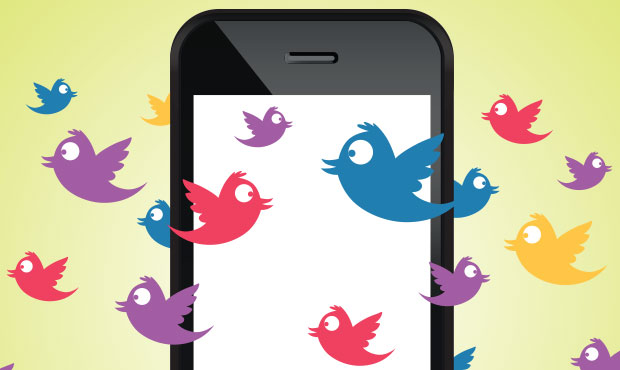Twitter on Tuesday announced a number of changes to tweets, including what will be included in a message’s 140-character count.
The changes, which will be rolled out in the coming months, were outlined by Twitter Senior Product Manager Todd Sherman:
- When replying to a tweet, tagged @names at the beginning of the reply no longer will be included in the character count.
- Photos, GIFs, videos, polls and quote tweets no longer will be counted against the character limit.
- Tweets that begin with a username will be delivered to all followers of that user. Previously, a period had to be inserted before the username, otherwise the tweet would be seen only by the followers of the writer of the tweet and any other usernames in the tweet.
- Users will be able to retweet and quote tweet themselves.
Platform for Narcissism
While the proposed changes aren’t likely to cause a squawk among most Twitter users, self-retweeting may irk some of them, maintained John Carroll, a mass communications professor atBoston University.
“There are a lot people who will look on retweeting yourself with dismay,” he told TechNewsWorld.
“People are so self-obsessed that it could become a form of spam that clogs up people’s timelines,” Carroll continued. “It’s one more platform for narcissism.”
A good thing about the changes, though, is that they show a flexibility that has been absent in the past. “Twitter held firm too long on a very stringent format,” said Andreas Scherer, managing partner atSalto Partners.
“This announcement is a sign that the company is willing to rethink the experience users have with its service,” he told TechNewsWorld.
Power-User Appeal
Nevertheless, the changes probably will be interesting only to power users of the service, said Jan Dawson, chief analyst atJackdaw Research.
“They won’t do anything at all to drive user growth,” he told TechNewsWorld.
Twitter power user Erna Alfred Liousas, an analyst with Forrester Research, welcomed the changes.
“They’re addressing things that didn’t make sense to all of us who use the platform on a regular basis,” she told TechNewsWorld.
“The changes will re-enforce why we’re on the platform. We’ll actually be able to have conversations without being penalized for including a person or link or photo,” Liousas said.
“The changes won’t bring new users to the platform,” she added, “but they’ll make the experience overall a lot smoother.”
Growth Woes
Twitter has been in the Wall Street doghouse for some time for failing to attract new users to its fold at rates comparable to competitors such as Facebook, Instagram and Snapchat.
The number of monthly active Twitter users worldwide rose only 2.6 percent from the first quarter of 2015 to the same period in 2016, from 302 million to 310 million, according toStatista.
Twitter is trapped in a paradox. “Its media presence is far bigger than its media footprint,” BU’s Carroll noted.
“It has only 65 million active users in the U.S. That’s a really small number compared to Instagram, Facebook and Snapchat,” he continued.
“Twitter has this outsized media presence because of who tends to use it — sports figures, news media and entertainment personalities,” Carroll said. “Because of that it gets more publicity than other platforms that are larger in scope.”
While the latest changes will appeal to existing users, they won’t address Twitter’s bigger problem, said Brian Blau, a research director at Gartner.
“Twitter hasn’t yet been effective at solving the issue of attracting, onboarding and retaining new users at significant growth rates,” he told TechNewsWorld.
“That new level of interest in Twitter hasn’t been seen yet, and while the new tweet features are good updates, they likely won’t help to change the situation with growth on their own,” Blau added.
Personality Problem
The changes won’t change Twitter’s revenue picture either. “The proposed changes make sense, but won’t be enough to dramatically move the needle,” Salto’s Scherer said.
“They’re more of an incremental improvement that won’t enable new revenue streams with a potential for future exponential growth in revenue and earnings,” he noted.
“Wall Street is expecting more from its former wunderkind. It appears that time is running out,” Scherer added.
Part of Twitter’s problem is how it stacks up against its competition, maintained Greg Sterling, vice president of strategy and insight for theLocal Search Association.
“Other sites have more personality than Twitter. Snapchat, Instagram, Facebook have an intangible thing that’s more inviting and engaging to some people,” he told TechNewsWorld.
“The audience Twitter needs to go after is the younger audience — the Snapchat and Instagram users,” Sterling said. “That’s hard because those two sites have a mindshare monopoly on that population.”





















































